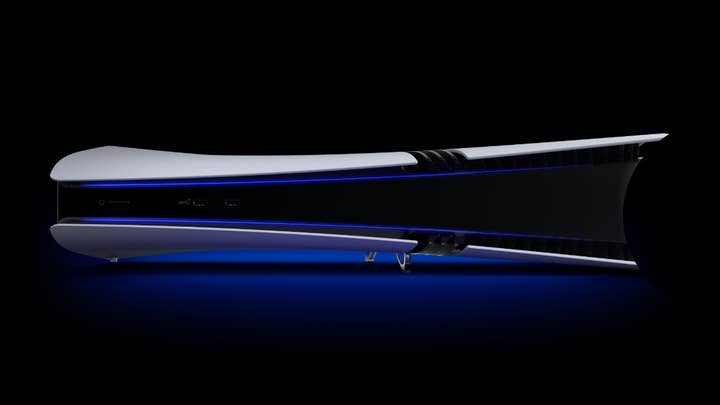The problem with PS5 Pro isn't the price tag | Opinion
There is definitely an audience for PS5 Pro, but even four years in, this generation still feels young
Every month on GamesIndustry.biz we publish data on the accessories market.
It's part of our monthly charts reports. Now, these figures don't really get picked up elsewhere. Most other media outlets seem primarily interested in how the games are performing or which console is currently on top. But it's there, every month. And there is some fascinating insight to be gleaned from these numbers.
For one, did you know that PlayStation Portal – the handheld device that people can stream PS5 games to (within the home) – is the No.1 accessory by revenue this year? Or that 2024's second most financially successful controller (in the UK) is the DualSense Edge, despite costing over £200?
Sony knows this. It knows all about its hyper-engaged fans who want the best experience possible. It knows what they can afford and what they care about. And it knows this group will be salivating at the prospect of a PS5 Pro.
That's what the new Pro model is all about. It's not about tackling some of the bigger issues facing the PS5 right now. It's not about convincing all those Nintendo Switch and PS4 players to upgrade machines. Those are groups of players who couldn't care less about AI-driven upscaling or advanced ray tracing.
The reality is manufacturing costs are much higher than they used to be, and the industry is no longer in a place where it can do aggressive loss-leading activity on hardware. Margin is important in 2024
A $700 PS5 Pro is not Sony's big play at driving a bigger install base for its hardware. It might help a bit, but really this is a high-end device for the platform's most enthusiastic fans. That's it.
Yet if you listened to a lot of the commentary after yesterday's news, and based on the messages that came in to GI, you'd have thought Sony had just made some disastrous, consumer-hating faux pas.
Granted, if PS5 Pro had a competitor, maybe Sony would have felt the need to go a bit lower on the price. But the reality is manufacturing costs are much higher than they used to be, and the industry is no longer in a place where it can do aggressive loss-leading activity on hardware. Margin is important in 2024.
Naturally, this might feel unfair to fans who were eagerly awaiting the new device but are now priced out. And gamers in some regions clearly feel hard done by when looking at the price in, say, the US vs their country (although I suspect there's a bit of unfamiliarity with local tax legislation).
Yet even so, a pricey, high-end version of the PS5 aimed at a specific niche in the PlayStation fan base doesn't sound like anything particularly controversial. If you want it and can afford it, great. If you don't or can't, stick with the device you've got. All the games will run well on it. Hell, most of them will still be running on PS4.
And that's perhaps the real issue here. PS5 Pro may be arriving four years into the cycle, but it still feels early. When the PS4 Pro launched in 2016, a whole year earlier in that lifecycle, not only were there justifiable technical reasons for its introduction (namely, the move to 4K screens). But the generation had delivered a number of major titles from its biggest studios already, and at a consistent cadence.

So many of the industry's biggest developers still haven't made a game for PS5. And even those that have, almost all of the games were still released on PS4. In fact, many of the games Sony was promoting alongside the PS5 Pro reveal were a generation old. The type of gamer that will be pre-ordering a PS5 Pro are the ones on social media bemoaning the industry's obsession with older hardware, insisting that it's only holding developers back. Why release a console that can push games further when most studios weren't even doing that with the current machines?
It's a tricky situation. You can't expect publishers and developers to walk away from older hardware when so many gamers still actively play there. And this generation's patchy release schedule has been the result of COVID-19 related delays and the industry's move to hybrid/remote working. These are all things outside of PlayStation's control. Yet it has all led to this feeling of a stop-start console generation that hasn't properly got going.
PS5 Pro may be arriving four years into the cycle, but it still feels early
PS5 Pro has an audience. There are PS5 gamers who have been actively engaged with their platform daily since it launched. They've gone through two Spider-Man games, and Elden Ring, and God of War, GT7, Horizon, Call of Duty: Modern Warfare, Resident Evil Village, Cyberpunk, Final Fantasy and Baldur's Gate 3. They're ready to take things up a level, and if they can afford it, they probably will.
And with a 2025 that's promising games like Monster Hunter Wilds, Borderlands 4 and GTA 6, there's plenty of games coming up that will make the investment feel worthwhile.
Yet if there's a degree of cynicism towards the new machine, and there is, I suspect it's not really about whether people might want it, or afford it. But rather the fact that the console industry ought to get itself back to full speed before offering up more horsepower.

